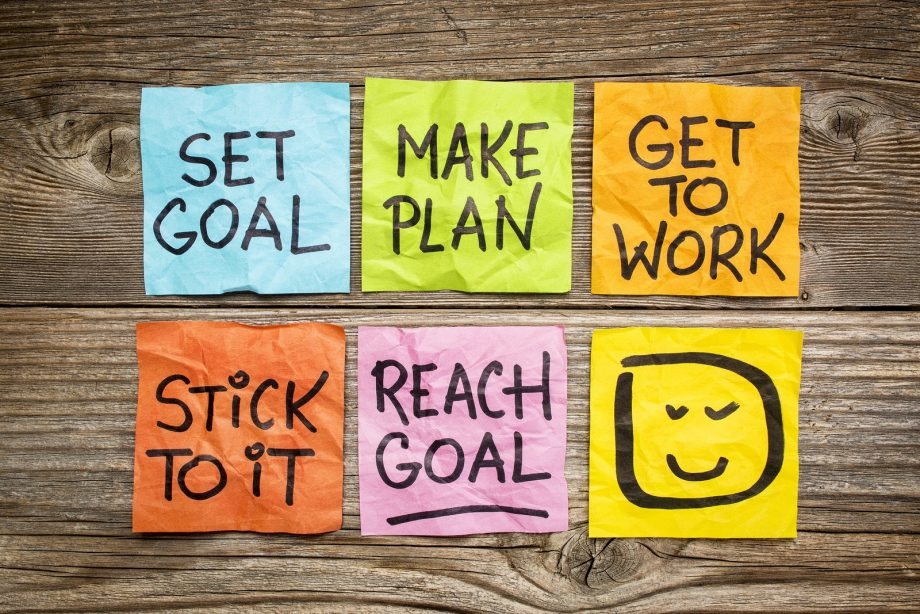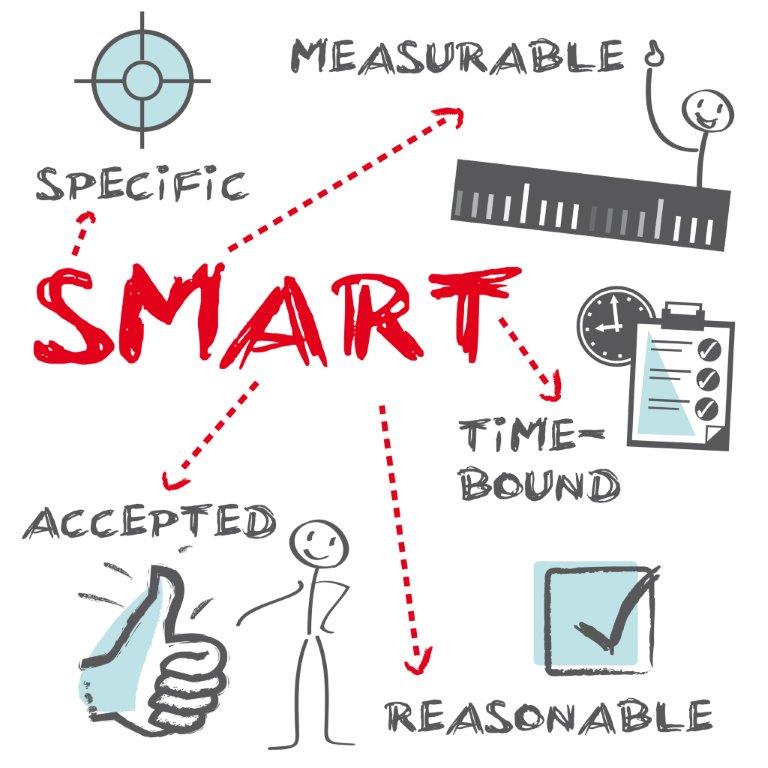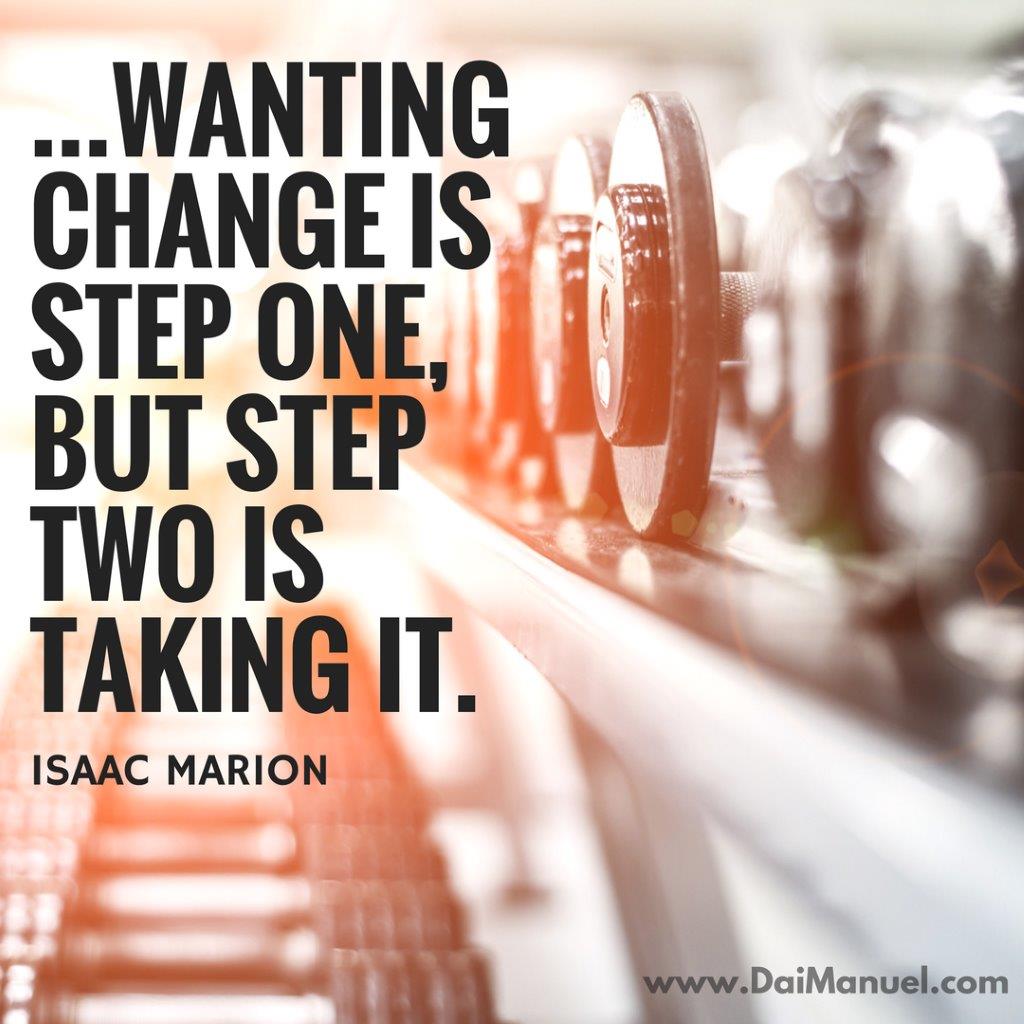5 steps to turn your motivation into real success (It's simple, but not easy)

To turn your motivation into true success is simple - but note to reader - simple doesn't mean it's easy... follow the following 5 steps to turn your motivation into real success.
Step 1: You need SMART goals.
Step 2: You need a plan.
Step 3: You need habits.
Step 4: You need realistic expectations.
Step 5: You need to take action...TODAY.

Smart goals will point you in the right direction and tell you what to do. The acronym smart reveals the characteristics your goals should have:
S - Specific
M - Measurable
A - Attainable
R - Realistic
T - Time sensitive
Note: Since I’m a powerlifter I’ll use a lot of examples related to strength. However, you can fill the blank with whatever your own goal is.

Finally, your goals should be big enough to let you work hard and small enough so you can attain them. This is best done with 1 huge goal and several smaller goals and partial goals.
Example huge goal: “I want to bench 40kg / 88lbs more in one years time.”
Example smaller goal: “I want to bench 10kg / 25lbs more every 12 weeks.”
Example partial goal: “I want to bench 5kg / 10lbs in 6 weeks.”
Use this structure to break down your goals even further, so at the micro level you know what you have to do today, tomorrow and so on.
In order to hit our example goal of “I want to bench 10kg / 25lbs more in 12 weeks, Sunday” you figured you have to bench say 2 times a week.
● Organized schedule → Time blocking
● Adherence → Calendar
● Systematic optimization
● Induces habits
If the activity itself is new to you, chances are you don’t yet have time set aside for it. To do so you reserve 1h Sunday to plan your next week according to your goals.
For example - “I’ll bench on Mondays (international bench day) and on Thursdays between 6:30 am - 7:30am.”
You see you blocked 1 specific hour for your training. This hour is sacred and can’t be pushed around or be avoided once you planned it.
Since every week can be different it’s mandatory to plan each week during your 1 planning hour on Sunday (or any day that suits you best).
You probably have a bunch of goals and appointments so a calendar or agenda of any kind will help you to stick to your plan. I use the built in calendar on my laptop and Google calendar to keep track of everything.
You probably heard of the term feedback loop. You should record every deviation from your plan.
For example - Due to time constraints you missed accessory work during your Thursday session. Or you had to work long hours on Wednesday so you were too tired to hit your rep-PR the next day.
Put those things into your calendar and evaluate at your next planning session. Optimize your schedule weekly to ensure lasting progress towards all your goals.
● Little to no willpower required
● Exponential return over time
Your willpower is limited. If you had to motivate yourself each day to brush your teeth they probably wouldn’t look great...if you still had them. My point is: Most things will take a long time to accomplish and you can’t rely on your willpower to get you there.
Once you established some habits, however, your willpower isn’t needed anymore. Studies have shown that habits form between 18 and 254 days. The more complex the habit the longer it takes. The sweet spot is 66 days.
Your goal is to hit every planned session up to 66 days, whereafter the likelihood of you missing your planned session diminishes.
This is great news regarding the limitation of your willpower. After roughly 2 months you can benefit the rest of the year up to the time you’ll hit your huge goals.
As soon as you hit your huge goals you’ll probably set new huge goals. This time, your habits are already there. You invested 66 days and will reap the rewards a lifetime.
● Virtuous cycle
● Adherence
Those initial 66 days won’t be easy all the time. You should aim for a virtuous cycle. This is a positive, reinforcing cycle where you get motivated by hitting your partial goals.
To get into the virtuous cycle be sure you’re informed about your goals.
Useful questions you should ask yourself:
➔ How long has it taken others to reach similar goals?
➔ Where can I find these people?
◆ E.g. trainers, forums, Reddit, quora, social cycle
➔ How similar are these people to me?
◆ E. g. gender, age, skill level, fitness
➔ Did I calculate some extra time to learn the skills in demand?
◆ E.g. If you never lifted weights in your life you need some time to learn the lifts first.
The sure path to failure is to have false expectations of how long it will take to see initial results.
After you started your virtuous cycle adherence becomes more and more effortless. Make sure you to hit the crucial 66 days to form your habit.
Execute your first habit-forming action today. The momentum is crucial for to get you going.
If you have time to read this you can do step 1 & 2 NOW.
○ Telling friends
■ Your friends or family could be in awe about your huge goals. This in return makes you feel good even though you haven’t done anything to accomplish it. Don’t do this or you’ll overthrow your virtuous cycle.
○ Impatience
■ Your first partial goal should be attainable this week, 2 weeks max. Make it easy for you to reinforce your virtuous cycle so impatience can’t form.
○ Avoid burnouts
■ I’m guilty of this all the time. Keep your partial goals easy to hit. Don’t set them so high you need to invest 4h per day to reach them. You’ll burn yourself out long before 66 days will pass. 3h per week is enough for your first week. Spread it out onto 3 separate days.
○ Forcing too many habits at once
■ Sequence your habit building efforts. Your limit should be 1 time intensive and 1 smaller habit for each 66 days-block. If you force 5 habits at once to form, chances are you won’t get any benefits whatsoever and wasted your time.
[divider style="dashed" top="30" bottom="30"]
Cyril Khan is a competitive powerlifter and strength advocate. He helps his audience to reach their strength goals through his site KhanLifts.com. He also eats protein muffins...a lot.
Also be sure to connect with Cyril on Facebook ) and Twitter )
[divider style="dashed" top="30" bottom="30"]
Here's the 5 Steps You Need to Turn Your Motivation into Real Success
Step 1: You need SMART goals.
Step 2: You need a plan.
Step 3: You need habits.
Step 4: You need realistic expectations.
Step 5: You need to take action...TODAY.

Step 1: You need SMART goals
Smart goals will point you in the right direction and tell you what to do. The acronym smart reveals the characteristics your goals should have:
S - Specific
M - Measurable
A - Attainable
R - Realistic
T - Time sensitive
Note: Since I’m a powerlifter I’ll use a lot of examples related to strength. However, you can fill the blank with whatever your own goal is.
- Specific- “I want to bench more” beats “I want to get stronger”. The former is describes a clear type of strength. The latter can vary too much regarding different sports and athletes.
- Measurable- For example - “I want to bench 10kg / 25lbs more” is connected with an exact measurement. “I want to bench more” is too vague.
- Attainable- If you’re going to say “I want to bench 60kg / 135lbs more in 12 weeks”, that’s probably very hard to attain. In contrast “I want to bench 10kg / 25lbs more in 12 weeks” is doable for a lot of athletes.
- Realistic- In sports, this is very similar to attainable. So we’re already at “I want to bench 10kg / 25lbs more in 12 weeks” which brings us to our final characteristic:
- Time sensitive- An open-ended goal is rarely met. Deadlines are crucial to successful athletes and allow for proper programming. You see the goal mentioned above meets all our expectations of a SMART goal: “I want to bench 10kg / 25lbs more in 12 weeks”.

Finally, your goals should be big enough to let you work hard and small enough so you can attain them. This is best done with 1 huge goal and several smaller goals and partial goals.
Example huge goal: “I want to bench 40kg / 88lbs more in one years time.”
Example smaller goal: “I want to bench 10kg / 25lbs more every 12 weeks.”
Example partial goal: “I want to bench 5kg / 10lbs in 6 weeks.”
Use this structure to break down your goals even further, so at the micro level you know what you have to do today, tomorrow and so on.
Step 2: You need a plan
In order to hit our example goal of “I want to bench 10kg / 25lbs more in 12 weeks, Sunday” you figured you have to bench say 2 times a week.
Benefits of a plan:
● Organized schedule → Time blocking
● Adherence → Calendar
● Systematic optimization
● Induces habits
If the activity itself is new to you, chances are you don’t yet have time set aside for it. To do so you reserve 1h Sunday to plan your next week according to your goals.
[tweet_box design="box_9"]"A goal without a plan is just a wish." - Antoine de Saint-Exupéry[/tweet_box]
Time blocking:
For example - “I’ll bench on Mondays (international bench day) and on Thursdays between 6:30 am - 7:30am.”
You see you blocked 1 specific hour for your training. This hour is sacred and can’t be pushed around or be avoided once you planned it.
Since every week can be different it’s mandatory to plan each week during your 1 planning hour on Sunday (or any day that suits you best).
Calendar:
You probably have a bunch of goals and appointments so a calendar or agenda of any kind will help you to stick to your plan. I use the built in calendar on my laptop and Google calendar to keep track of everything.
Systematic optimization:
You probably heard of the term feedback loop. You should record every deviation from your plan.
For example - Due to time constraints you missed accessory work during your Thursday session. Or you had to work long hours on Wednesday so you were too tired to hit your rep-PR the next day.
Put those things into your calendar and evaluate at your next planning session. Optimize your schedule weekly to ensure lasting progress towards all your goals.
Step 3: You need habits
Benefits of habits:
● Little to no willpower required
● Exponential return over time
Little to no willpower
Your willpower is limited. If you had to motivate yourself each day to brush your teeth they probably wouldn’t look great...if you still had them. My point is: Most things will take a long time to accomplish and you can’t rely on your willpower to get you there.
Once you established some habits, however, your willpower isn’t needed anymore. Studies have shown that habits form between 18 and 254 days. The more complex the habit the longer it takes. The sweet spot is 66 days.
[tweet_box design="box_9"]A man who can't bear to share his habits is a man who needs to quit them - Stephen King[/tweet_box]
Exponential returns
Your goal is to hit every planned session up to 66 days, whereafter the likelihood of you missing your planned session diminishes.
This is great news regarding the limitation of your willpower. After roughly 2 months you can benefit the rest of the year up to the time you’ll hit your huge goals.
As soon as you hit your huge goals you’ll probably set new huge goals. This time, your habits are already there. You invested 66 days and will reap the rewards a lifetime.
Step 4: You need realistic expectations
Benefits of realistic expectations:
● Virtuous cycle
● Adherence
[tweet_box design="box_9"]I’m not in this world to live up to your expectations and you’re not in this world to live up to mine - Bruce Lee[/tweet_box]
Virtuous cycle
Those initial 66 days won’t be easy all the time. You should aim for a virtuous cycle. This is a positive, reinforcing cycle where you get motivated by hitting your partial goals.
To get into the virtuous cycle be sure you’re informed about your goals.
Useful questions you should ask yourself:
➔ How long has it taken others to reach similar goals?
➔ Where can I find these people?
◆ E.g. trainers, forums, Reddit, quora, social cycle
➔ How similar are these people to me?
◆ E. g. gender, age, skill level, fitness
➔ Did I calculate some extra time to learn the skills in demand?
◆ E.g. If you never lifted weights in your life you need some time to learn the lifts first.
The sure path to failure is to have false expectations of how long it will take to see initial results.
Examples of delayed visibility in progress:
- Going back to my huge goal on the bench press: I probably won’t see an increase in strength till session 4-6. More experience = more sessions
- Weight loss: While on a diet your body will store more water. Causing your scale to display the same weight up to 14 days.
- Exercise execution: If you want to learn the snatch or clean & jerk you probably need to work on your mobility first. Olympic lifts demand positions that aren’t met in the office world.
Adherence
After you started your virtuous cycle adherence becomes more and more effortless. Make sure you to hit the crucial 66 days to form your habit.
Step 5: You need to take action TODAY
Execute your first habit-forming action today. The momentum is crucial for to get you going.
Examples to get going:
- Running 5k: Go for a short 3-5min run...NOW.
- Squatting 160 kg / 350lbs: Get your first session in TODAY.
- Losing weight: Don’t drink any sweet beverages till tomorrow.
Block time for steps 1 & 2:
If you have time to read this you can do step 1 & 2 NOW.
[tweet_box design="box_9"]Whatever you do will be insignificant, but it is very important that you do it - Gandhi[/tweet_box]
Mistakes to avoid:
○ Telling friends
■ Your friends or family could be in awe about your huge goals. This in return makes you feel good even though you haven’t done anything to accomplish it. Don’t do this or you’ll overthrow your virtuous cycle.
○ Impatience
■ Your first partial goal should be attainable this week, 2 weeks max. Make it easy for you to reinforce your virtuous cycle so impatience can’t form.
○ Avoid burnouts
■ I’m guilty of this all the time. Keep your partial goals easy to hit. Don’t set them so high you need to invest 4h per day to reach them. You’ll burn yourself out long before 66 days will pass. 3h per week is enough for your first week. Spread it out onto 3 separate days.
○ Forcing too many habits at once
■ Sequence your habit building efforts. Your limit should be 1 time intensive and 1 smaller habit for each 66 days-block. If you force 5 habits at once to form, chances are you won’t get any benefits whatsoever and wasted your time.
[tweet_box design="box_9"]What would life be if we had no courage to attempt anything? - Vincent Van Gogh[/tweet_box]
[divider style="dashed" top="30" bottom="30"]
 About the author:
About the author:
Cyril Khan is a competitive powerlifter and strength advocate. He helps his audience to reach their strength goals through his site KhanLifts.com. He also eats protein muffins...a lot.
Also be sure to connect with Cyril on Facebook ) and Twitter )
[divider style="dashed" top="30" bottom="30"]






































































































